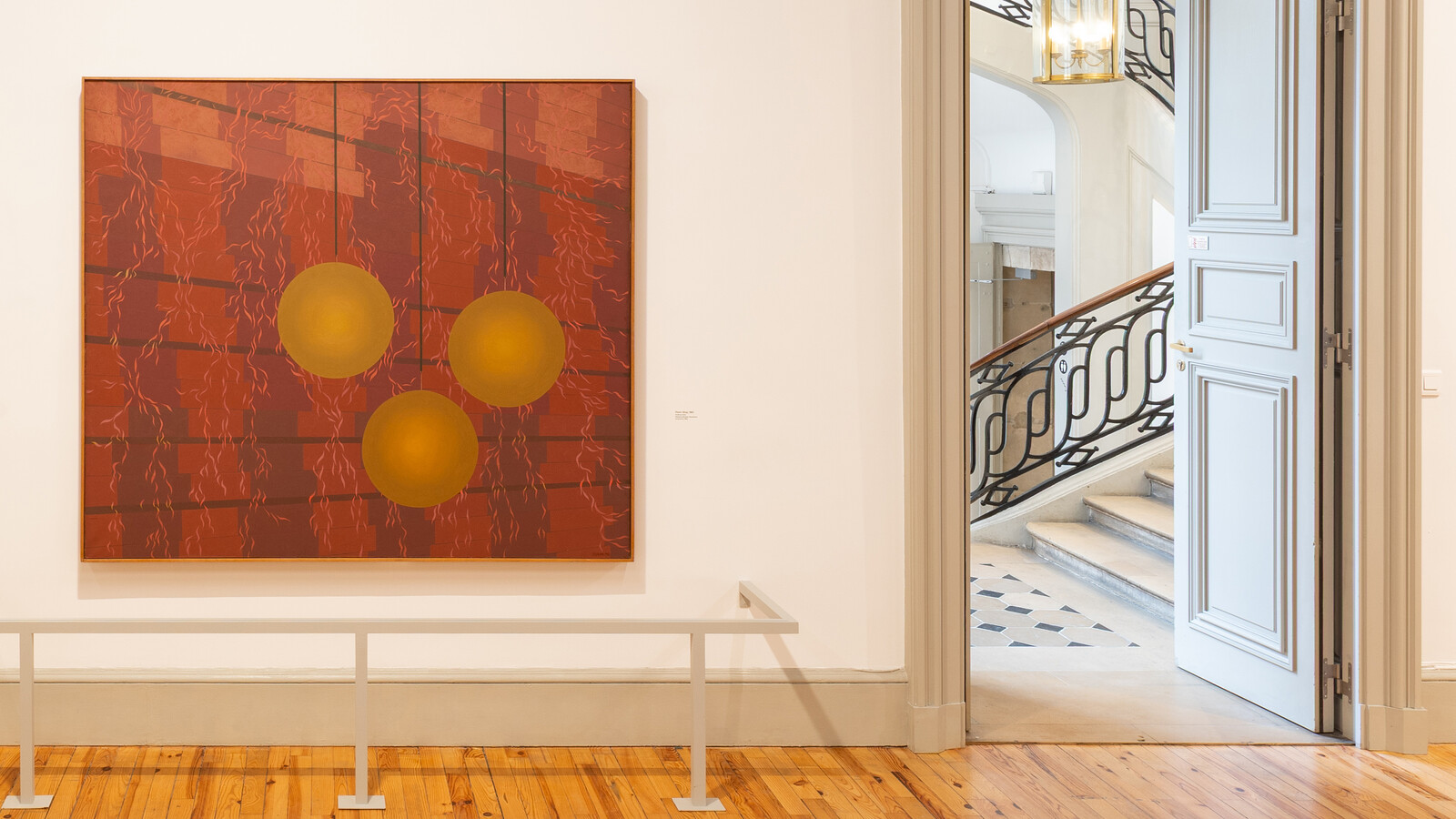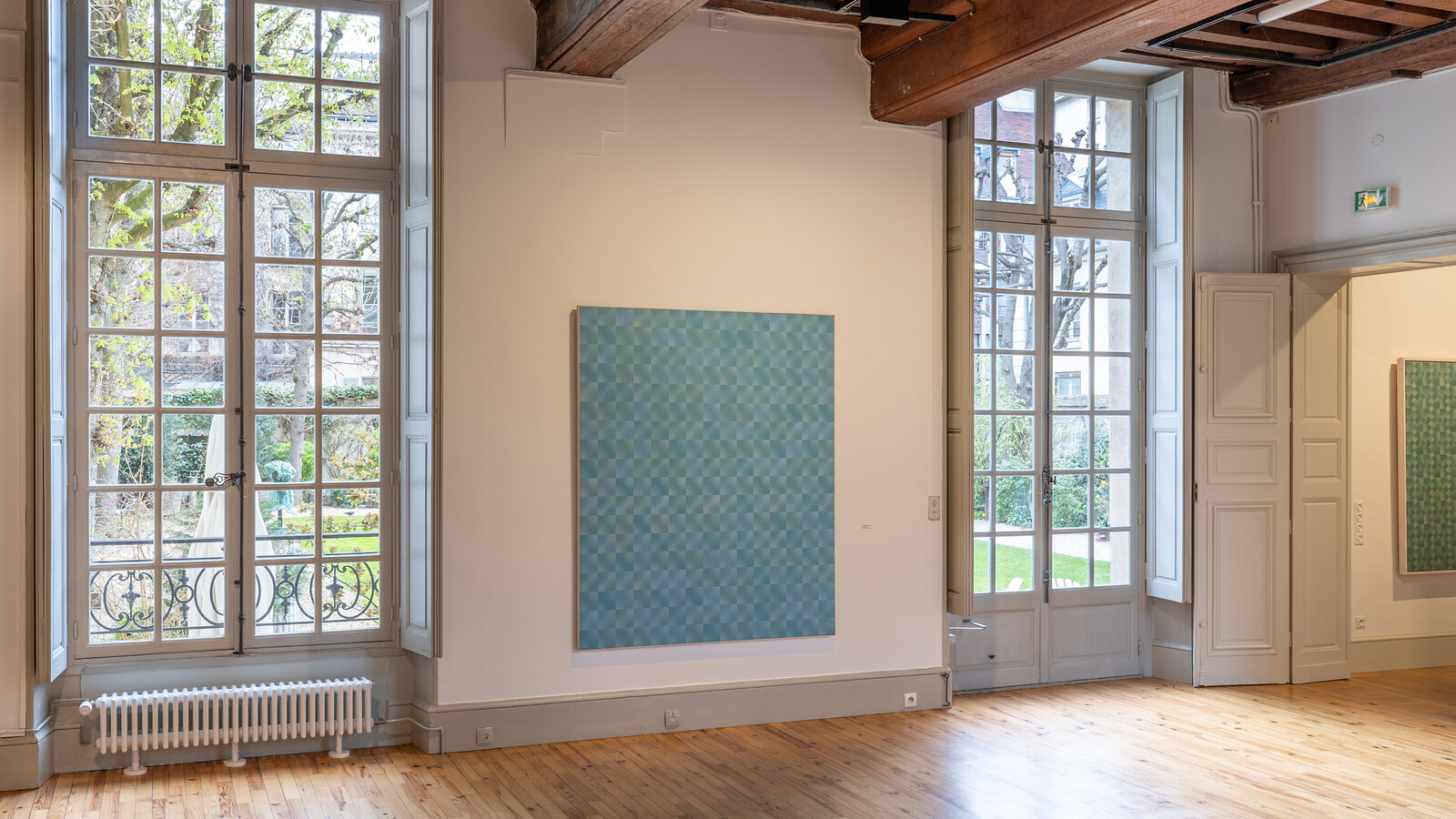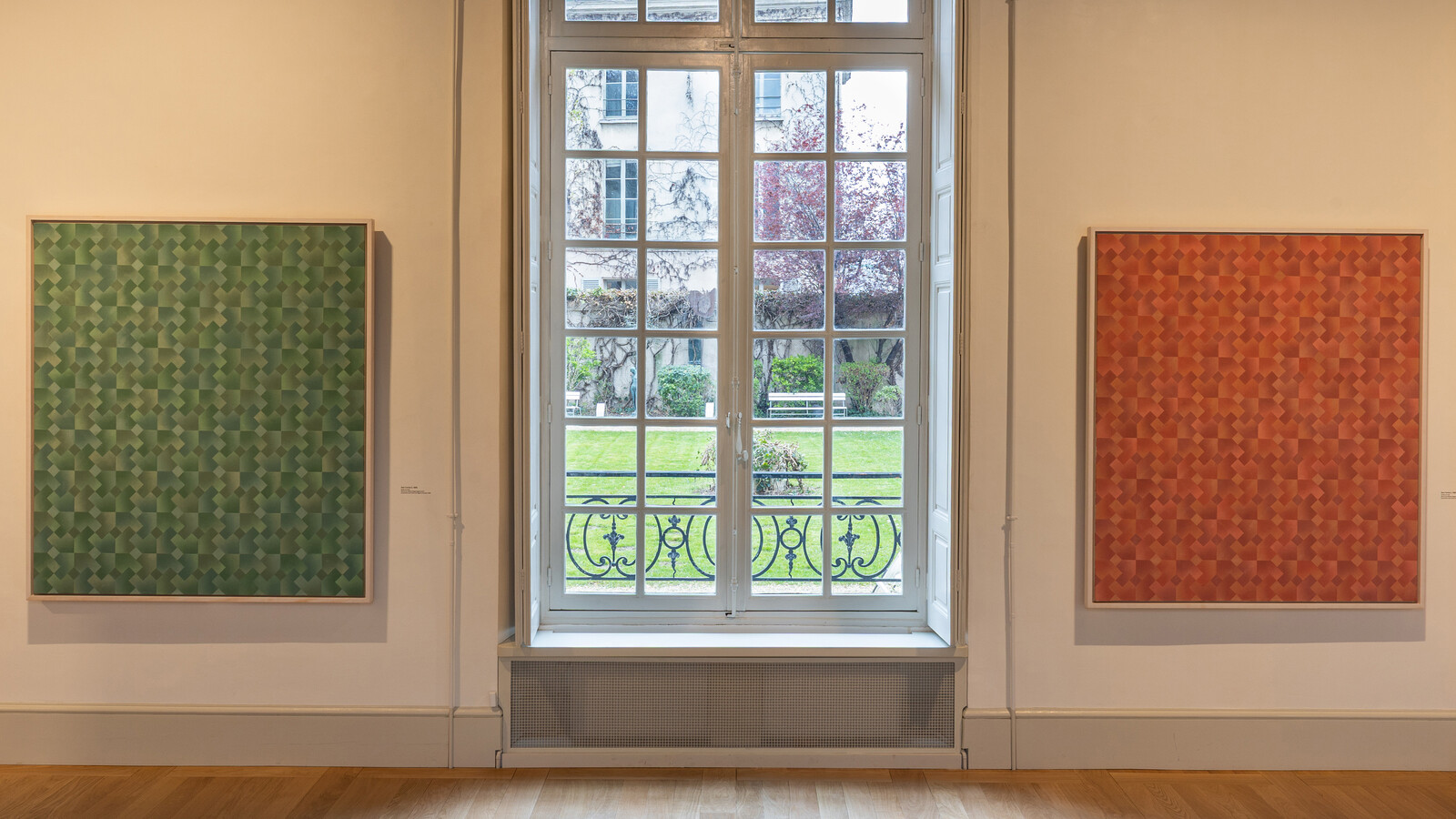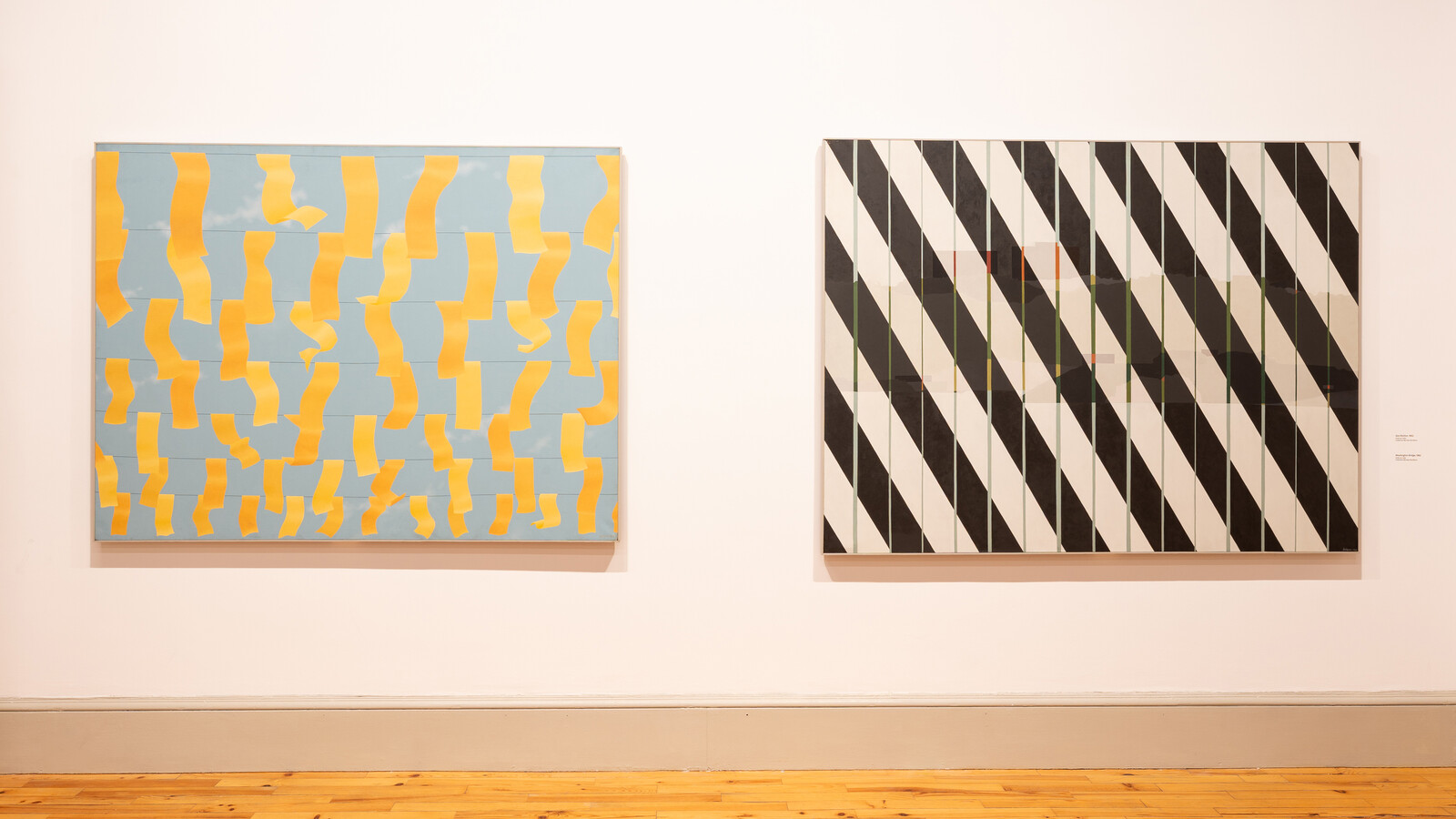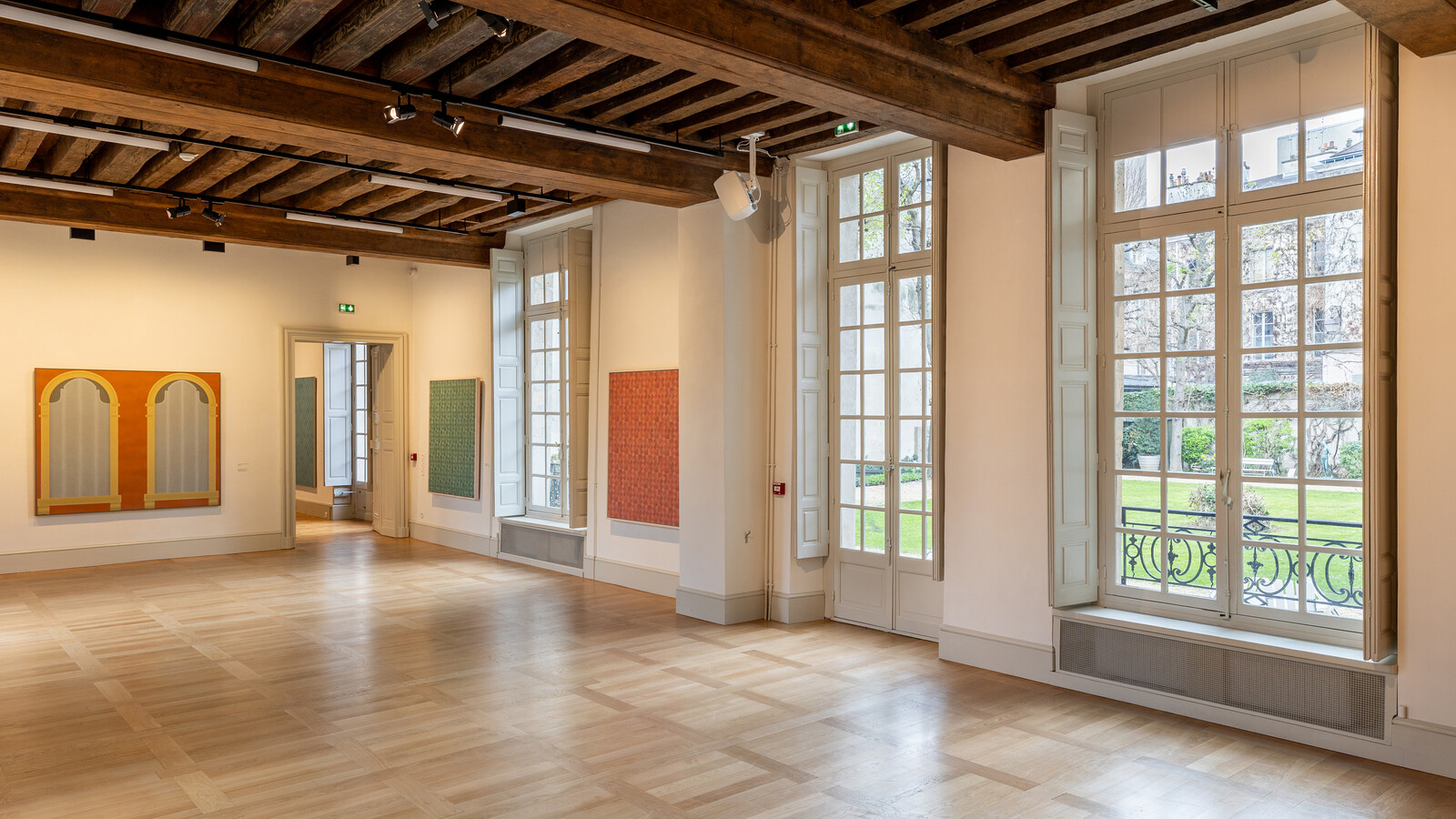Stockholm—New York—Paris
March 28–July 20, 2025
11 rue Payenne
75003 Paris
France
Hours: Tuesday–Sunday 12–7pm,
Thursday 12–9pm
T +33 1 44 78 80 20
institutsuedois@si.se
Standing at the crossroads between the American and European avant-gardes, Barbro Östlihn developed a unique painterly idiom that stands apart from established artistic movements. Only at the turn of the millennium did the work of this prolific painter gain the attention it so richly deserves. This is the first retrospective of Barbro Östlihn’s work in France.
In 1961, Barbro Östlihn arrived in New York with her husband, the renowned visual artist, art critic and author Öyvind Fahlström. They moved into Robert Rauschenberg’s former loft in South Manhattan, which would serve as both their apartment and their studio. Impressed by the imposing architecture and fascinated by the endless spectacle of construction and destruction in that part of the city, Östlihn developed her own artistic idiom on the margins of pop art and Nouveau Réalisme, which were in vogue at the time. She would wander through Manhattan by day with her camera, and paint by night. It wasn’t the hubbub of the streets that interested her; it was the façades that formed their backdrop, which she transposed onto her large canvases as mosaics and geometric macro-forms, often adding the names or addresses of the buildings themselves.
From 1963 onwards, she exhibited regularly at galleries including Galerie Cordier & Ekstrom, Tibor de Nagy Gallery and Marian Goodman Gallery, and drew accolades from leading critics such as Barbara Rose and Donald Judd. She also worked with Fahlström at a number of events—the 1966 Venice Biennale, exhibitions and evening gatherings—where all kinds of avant-garde artists congregated. Despite the place she occupied in this community and the finesse of her painting, her art has only recently received the recognition it deserves.
The couple separated in 1975 and the following year Östlihn moved in with the French artist Charles Dreyfus, with whom she would live in Paris until her death in 1995. Once again, walls and floors became subjects for her paintings, which evolved towards an even more abstract language. She was represented by the baudoin lebon gallery at this time.
Her uniquely powerful work failed to gain recognition in Sweden until the major exhibition held at the Moderna Museet in 1984. From the 2000s onwards, after the artist’s death, a series of exhibitions would seal her place in the history of Swedish post-war art. Having presented her New York period in 1999, the Institut suédois offers the first retrospective of Barbro Östlihn’s work in France this spring.
The exhibition features some twenty works, most of them very large, which are emblematic of Östlihn’s entire career, as well as reproductions of photographs and sketches upon which her work is based. Also included are archive documents and photographs testifying to exchanges between Swedish and French artists in the 1960s and the role Östlihn played in them.
Curator: Annika Öhrner
Annika Öhrner is Associate Professor at Södertörn University, Stockholm, who presented her PhD thesis on Barbro Östlihn at Uppsala University in 2010. The author of numerous publications, she specialises in critical historiography, transnational transfers and the history of museums and exhibitions, particularly in the 1960s and 1970s.
